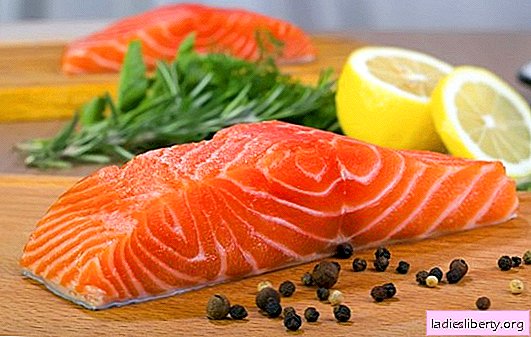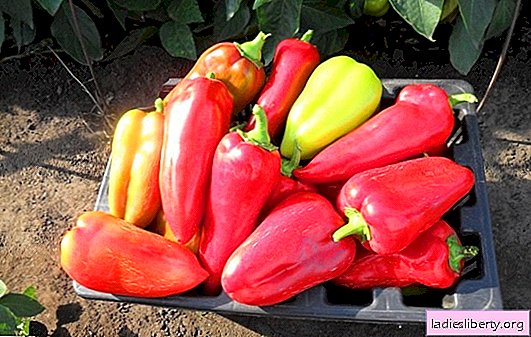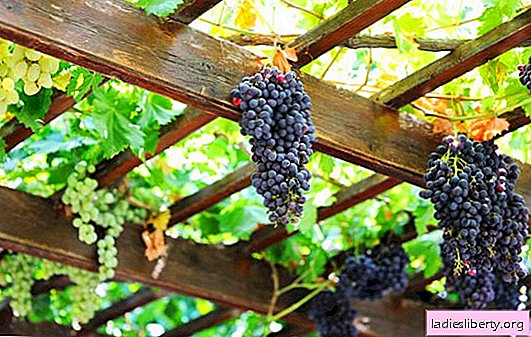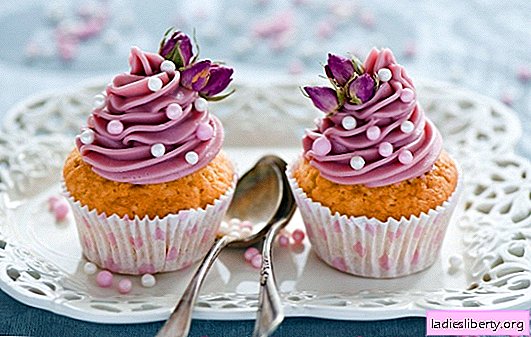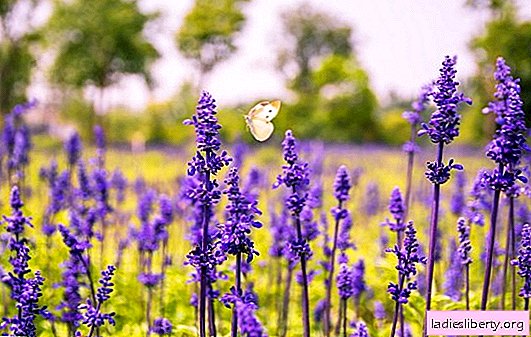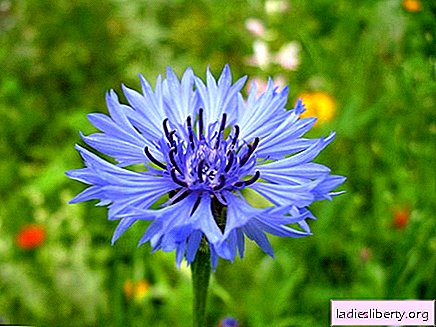
Cornflower - General Description
Cornflower (Centaurea) - a weed field plant of the family Astra, Compositae. The leaves are linear lanceolate, pubescent with felt, in different forms from 15 to 100 cm. The stem is straight, ribbed and rough. The flowers have a color from blue to lilac and purple, in the form of single flower baskets, covered on the outside with egg-shaped wrappers with brownish fringed, fringed edges. The root is rod. Fruits have a thin reddish tuft.
Cornflower - types and places of growth
Along the roadsides and forest edges, the most common is Cornflower meadow, which is a perennial weed. One or two-year-old Blue cornflower grows in fields and gardens among cereal crops in addition to roadsides. Cornflowers grow in Europe, the European part of Russia, Ukraine, the Baltic states, Kazakhstan, the Caucasus, the Crimea and the Far East (except for the Far North and the southernmost regions).
Cornflower - healing properties
This plant can be called medicinal on a full basis, a fairly large list of ailments can be cured with cornflowers. Preparations from it have many healing properties, including diaphoretic, antipyretic, diuretic and antimicrobial. With its help, you can relax, heal and anesthetize wounds, relieve smooth muscle spasms and improve digestive processes. Cornflowers stimulate appetite and improve digestion, and a laxative is prepared from their roots. A large area of application of this medicinal plant is associated with eye diseases - these are lotions for the eyes, medicine for blindness. Jaundice, gout, fever, colic, worms - this is another list of diseases in which cornflower can be useful.
Cornflower - dosage forms
For the manufacture of infusions, dried edge flowers and cornflower leaves are used. The collection of grass should be carried out as follows: collect baskets of flowers, pluck out the edge flowers with your hands and ventilate in a dark place. Properly picked blue cornflower flowers will be blue in color, they are bitter in taste and have a bitter smell. When drying flowers, sunlight is not allowed, as it destroys medicinal properties. separately dry the grass and roots.
Cornflower - recipes
For medicinal purposes, this folk remedy is used internally in the form of infusions of herbs, roots or flowers and as part of herbal preparations, as well as lotions and lotions.
1. To prepare a laxative from cornflowers, pour 2 teaspoons of the plant roots with 200 ml of boiling water and insist 2 hours. It is necessary to take 1 tbsp. spoon shortly (15-20 minutes) before meals.
2. Infusion for strengthening hair: in 500 ml of a mixture of vinegar and boiling water add 1 tablespoon of flowers and leave for half an hour in a dark place. Rinse hair twice a day.
3. For lotions from conjunctivitis 6-8 times a day use filtered and cooled solution - 2 tbsp. tablespoons of herbs in 1 cup of boiling water.
Cornflower - contraindications
There is evidence that the plant contains cyanide components, so before using it, you must consult your doctor. Be careful!
It is interesting
Cornflower is one of the few “reasonable” flowers that communicates with insects. The pollen from the tube in the assembled form is stored in a tubular petal until the insect touches the flower. The insect with its touch sets in motion a natural mechanism: a shrunken tube slides down and a lump of pollen is pushed out under the belly of the insect. 5-6 servings are stored until the next pounding.
Myths and legends
The cornflower received its Latin name from Karl Linnaeus, who, choosing a name for this plant, was based on an ancient Greek myth. The history of the flower is closely related to the healing of the Chiron centaur from the poison obtained from the bite of the Lernean hydra, therefore the feminine Latin name of the flower centaureus means "referring to the centaurs."
Another option for the name to appear is from the words “stab” and “bull”, that is, “stabbing a bull”.
Comments

